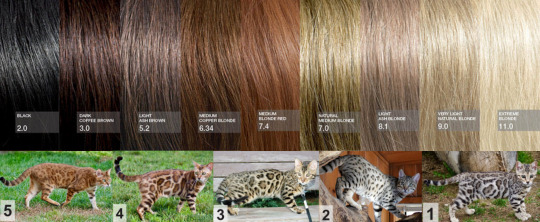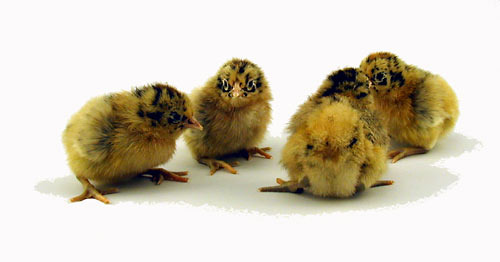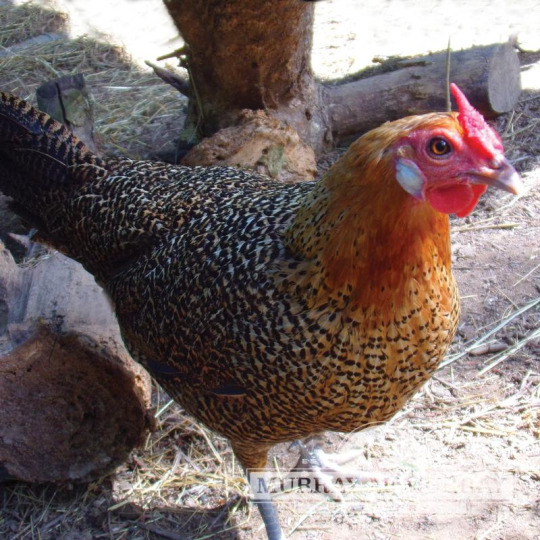Bird genetics asks welcome! I can phenotype adult birds.
Don't wanna be here? Send us removal request.
Note
Can Amber Cat be silver/smoke?? Does it interact differently?? Do we know about any Amber silver/smoke??
Yes, of course! Inhibitor isn't rare in norwegians, and amber isn't kept "clean", they mix it with everything they have: dilute, orange, white spotting, all kind of tabby patterns, and yes, silver. It works just the same as always: the roots/agouti bands become white.
Here are a bunch of different amber silvers and smokes (when otherwise not indicated, i pulled them from pawpeds because i'm lazy):





light amber silver tabby, amber smoke, amber silver mackerel tabby bicolor, light amber tortoiseshell silver ticked tabby bicolor, amber silver blotched tabby with white
46 notes
·
View notes
Text


She's standing like that because she wants to be a show bird
291 notes
·
View notes
Text
Down length differences? Could this be an example of a dilute (short down) and intense (not dilute, normal down) squabs?

uuuuuuuuugh
2K notes
·
View notes
Note
Leucism means depigmentation aka white spotting aka piebaldism.


And yep, albinism does mean the pigment producing cells don't function correctly or produce the right kind of pigment. But there are multiple types of albinism. Not all of them affect eye color. TYRP1 mutations are a common type of albinism, known as rufous albinism, and they make the animal produce brown or red pigment instead of black but they don't always affect eye color.

I don't know if this question is already asked and my apologies if it has already been answered. But are there any actual differences about leucistic cats VS cats with albinism? Through either the image or the color of their paw and nose, ears.
I think the best way of using these terms is when leucism means an animal without pigment producing cells, and albinism means an animal with (mostly) intact pigment producing cells that nevertheless don't produce (the correct type and amount of) pigment. This means on the cellular level, there is a very real and tangible difference between them.
Visually? They usually mention the eyes, as albinos have pigmentless pale blue eyes with a pinkish cast (that's not always visible of photos), while full white cats can have pure blue and pigmented (green, yellow, orange) eyes. I don't know about any other noticeable phenotypic difference.



There are a lot of other things that can't be seen tho, like only full white being associated with deafness, difference method of inheritence (albinism is recessive, leucism is dominant), different genes.
1K notes
·
View notes
Note
Wow that's a marvelous coincidence! I'm glad they got back safe and sound!
I knew someone whose emus got out once once, and one of them was missing for at least a week before a hunter found him and helped him get home safe and sound. It made the news:
Only in Wisconsin.
I had some unexpected visitors today when I went out to do goat chores!


That's a nice pair of Spaldings. A BS male and a hen. Some idiot just lost $600+ because they thought peafowl were like chickens and could instantly be free ranged.
If they stick around and you'd like to capture them (and they should be captured even if you don't intend to keep them, they do not know where they are and will not be adept at finding food and water and are susceptible to predators), they can be offered game bird feed or dry cat food or whole corn or peanuts, and led into an enclosed space. Shut the door behind them and capture them in the dark (it will be easier to grab them when they can't see).
If you'd like to keep them I can give housing advice, otherwise either contact your local humane society/ASPCA or drop me a PM and let me know where you are and I'll see what I can do about helping you find a place for them with new owners.
4K notes
·
View notes
Note
I wish medium haired toygers existed. Then I feel like they could really imitate the "tiger" look.



What breed is this beauty??
And what do we know about this breed??
(Also, I like to think Tigerstar looks like this, just so he could more resemble irl tiger)
That's the toyger!
They were bred from mackerel randombreds with bengals (i think you can see the similarity), but specifically for a mackerel pattern, not rosettes.
I know it's doesn't go that well with the name, but i've always headcanoned Tigerstar as a black blotched tabby. To be dark, you know

46 notes
·
View notes
Text
Quail Mottled Hen - Photo by Saveria Lippera on Facebook
e^b/e^b Co/Co Ml/Ml mo/mo

I think this is a perfect example of how mottled birds will take whatever black they can get and deposit it after the white before the feather returns to its usual pigmentation.
The cockbird is really beautiful: these photos by FIAV - Federazione Italiana Associazioni Avicole on Facebook.

I had to share because I love Belgian d'Anvers.
15 notes
·
View notes
Note
I know you probably have no idea, but you're the only person I know who is also into this stuff, and there's no info online. because mammals have basically the same hair color genes, would human hair colors be analogous to cats? black=default, brown=chocolate, blond=either cinnamon or some type of dilution, red=red (phaeomelanin replacement)? I know piebald and temp. sensitive albinism actually exist very rarely in humans too
Red is an mc1r mutation, i know that (like amber in cats). Wait a minute, I'll try to look around...
So. uhh.
We identified 123 autosomal and one X-chromosome loci significantly associated with hair color; all but 13 are novel.
via https://www.nature.com/articles/s41588-018-0100-5
Wow, that was an exciting article. Look at this for example:
First, the observation of higher prevalence of lighter hair colors among women follows previous findings based on objective quantitative measurement of hair color, suggesting that sex is truly associated with hair color, independent of socially driven self-reporting bias.
Light hair colors (blonde and red) are more common among women. Very interesting.
Anyway unfortunately human hair color seems to be very polygenic. Here's another good article i found, with even more genes: https://www.nature.com/articles/s41467-018-07691. They describe at least 16 MC1R variants associated with red hair with different penetrances, and found related mutations on several other genes too, including POMC and RALY (the latter influences the expression of ASIP, a familiar peptide: this is our very own agouti gene, responsible for melanistic morphs in several species). On the other hand the variants of genes HERC2 and OCA2 seems to be associated with blonde hair and decreased probability of red.
Unfortunately despite all of this, MC1R mutations ≠ red hair:
Although 93% of individuals with red hair carry two MC1R variants, these make up only 15% of people who carry two MC1R variants. The majority of people with two variants have blonde (15%) or light brown hair (41%).
And this is still just red. Every other color is even more complicated. The authors made a genetic score value to predict the hair color on the blonde vs brown vs black scale based on 213 gene variants.
These include mutations of the genes TYR and TYRP1 - respectively C (color restriction) and B (brown) in cats -, EDNRB, a gene associated with (i believe) roan-type colorations in different animals, and KITLG or KIT-ligand, a gene (based on the name) working together with KIT (responsible for white spotting in cats).
So all in all: i wouldn't say brown or blonde hair in humans = chocolate or cinnamon or anything else in cats. Even red hair as the equivalent of cats' MC1R-type recessive reds is a little bit of an oversimplification.
The closest analogue our hair color varieties have in cats is probably... rufousing.

34 notes
·
View notes
Note

Yes, everything that has identified mutations! (Which unfortunately means sometimes i chose to leave out variants that are definitely allelic to something i included, but i don't have confirmed mutations for it.)


(Feel free to comment on the texts, this probably isn't the final version yet anyway and i'm not the greatest at explaining convoluted inheritence patterns in a few words.)
I'm almost done with MC1R now, there's only turkeys left, and maybe rats. After that I have like six genes remaining, everything else is pretty much done - the total is around 80 genes, i think. I'm pretty sure most that is still missing is one-mutation genes, except. Well. KIT. That'll be a big chunk probably.
MC1R in Japanese quail also has Sparkly, Pansy, and American Pansy, and ASIP in Japanese Quail also has Calico but maybe those are the ones that aren't confirmed mutations, I don't know.
I've actually never read up on what genes the different turkey mutations are on so I decided to look up if MC1R is in turkeys, and to no surprise, it is the Bronze locus. Thank you for mentioning turkeys because I actually wasn't sure about that.
It's always been really weird to me that TYRP1 is autosomal in mammals but sexlinked in birds.
1 note
·
View note
Text

using my macrophotography setup for turkey pictures
926 notes
·
View notes
Text
#i think this is the only made-in-laboratory mutation i've included in my upcoming gene series#(seriously i'll start soon mc1r has just so many variants)
MC1R
OOOH! Will you be including the Extension (E) locus for chickens and Coturnix or even Button Quail?
Will you be adding the agouti (Y) locus for Coturnix?
If not, all good, I might have an idea for myself...

please look at this beautiful mouse
60K notes
·
View notes
Text


#come on puddleshine#amer does propaganda#aesthetically it is the most pleasing sprite#amer talks cats#cats
46 notes
·
View notes
Text
#he helped me confirm momma carries yellow skin#hopefully I'll be able to tell if he's duckwing or birchen soon#if he's duckwing#hot diggity dog!#if hes birchen... that's okay too
He's definitely birchen.
Down color confirms it.
Chick down doesn't tell you much, but the one thing it's really good at is e locus, which is good because the same pattern can be on a lot of different bases.

123 notes
·
View notes
Note
No question just wanted to share:



My little white chick has willow shanks! Kinda hard to see in the pics. I think it's homozygous birchen, silver based, and heterozygous dominant white. It's a neat combo that I don't see too often. Here's a whitey with willow shanks I found online:

I like the look! It's weird!
I love willow shanks! Also, that's an interesting way of making white, erasing the gold part of birchen with silver and erasing the black part with dominant white.
So, fun fact: White Jersey Giants are supposed to have Willow shanks and I even got a picture of one to show that off a couple of years ago


#willow#shank color genetics#thank you for sharing#shares#dominant white silver birchen#white#recessive white
4 notes
·
View notes
Note
Well if you find out about Recessive Wheaten e^y that is something I also deny. Wheaten isn't really dominant or recessive to Duckwing and I don't see how buff Minorcas, Rhode Island Reds, and Speckled Sussex are any different from the equivalent "Dominant Wheaten" based varieties. If there are two Wheaten alleles they both act in the same way so it's not really important anyway.
Hello!
I have a question: I've read about an mc1r allele called buttercup (x), but i can't quite confirm if this is what the breed sicilian buttercup has. Do you know if they really have that, or the name's just a coincidence?

The allele "e^bc" "Buttercup base" was discovered in the Buttercup breed and therefore named after the Buttercup breed, however, I don't believe it actually exists! Most folks that are into poultry genetics do not acknowledge e^bc. I believe Sicilian Buttercups are actually a modified Partridge but they looked just different enough that scientists originally assigned a different allele to them. I've never seen a picture of e^bc isolated from the pattern modifiers.
Genetic analysis could determine if it is a different gene. Surprisingly, a lot of the genes in chickens haven't actually been analyzed even though the chicken is the most numerous (and economically most important) bird in the world. But nobody cares about color. However, even if e^bc exists it doesn't matter much because whatever Buttercups have works just like Partridge.

Sicilian Buttercup chicks (from Feathersite.com)

Gold Pencilled Hamburg chicks (from Murray McMurray)
Gold pencilled Hamburg (just looks like a Buttercup that has been selected to have more black patterning. From Murray McMurray.)

Personally, I think they got excited realizing there are more than two E locus alleles and they just got carried away. A lot of the old research they did does seem a bit disorganized. Who can blame them? They were trying to figure things out!
24 notes
·
View notes
Note
Hello!
I have a question: I've read about an mc1r allele called buttercup (x), but i can't quite confirm if this is what the breed sicilian buttercup has. Do you know if they really have that, or the name's just a coincidence?

The allele "e^bc" "Buttercup base" was discovered in the Buttercup breed and therefore named after the Buttercup breed, however, I don't believe it actually exists! Most folks that are into poultry genetics do not acknowledge e^bc. I believe Sicilian Buttercups are actually a modified Partridge but they looked just different enough that scientists originally assigned a different allele to them. I've never seen a picture of e^bc isolated from the pattern modifiers.
Genetic analysis could determine if it is a different gene. Surprisingly, a lot of the genes in chickens haven't actually been analyzed even though the chicken is the most numerous (and economically most important) bird in the world. But nobody cares about color. However, even if e^bc exists it doesn't matter much because whatever Buttercups have works just like Partridge.

Sicilian Buttercup chicks (from Feathersite.com)

Gold Pencilled Hamburg chicks (from Murray McMurray)
Gold pencilled Hamburg (just looks like a Buttercup that has been selected to have more black patterning. From Murray McMurray.)

Personally, I think they got excited realizing there are more than two E locus alleles and they just got carried away. A lot of the old research they did does seem a bit disorganized. Who can blame them? They were trying to figure things out!
#asks and answers#buttercup#sicilian buttercup#autosomal barred#buttercup pattern#e^bc#e^b#buttercup allele#partridge#chicken genetics#chicken color genetics
24 notes
·
View notes
